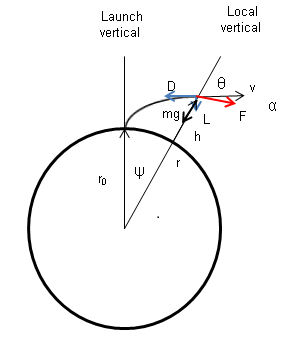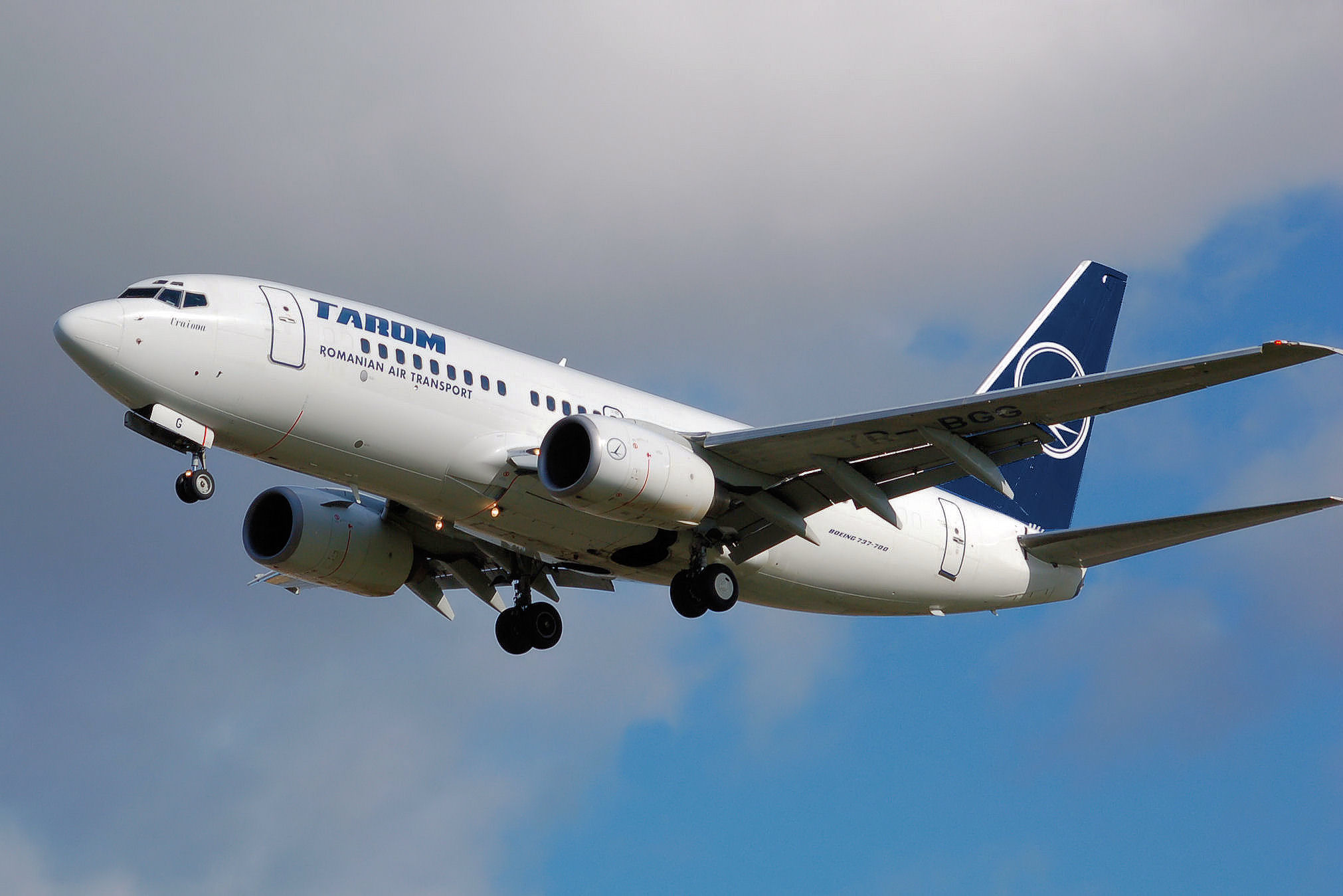|
Aircraft Principal Axes
An aircraft in flight is free to rotate in three dimensions: '' yaw'', nose left or right about an axis running up and down; ''pitch'', nose up or down about an axis running from wing to wing; and ''roll'', rotation about an axis running from nose to tail. The axes are alternatively designated as ''vertical'', ''lateral'' (or ''transverse''), and ''longitudinal'' respectively. These axes move with the vehicle and rotate relative to the Earth along with the craft. These definitions were analogously applied to spacecraft when the first crewed spacecraft were designed in the late 1950s. These rotations are produced by torques (or moments) about the principal axes. On an aircraft, these are intentionally produced by means of moving control surfaces, which vary the distribution of the net aerodynamic force about the vehicle's center of gravity. Elevators (moving flaps on the horizontal tail) produce pitch, a rudder on the vertical tail produces yaw, and ailerons (flaps on the wings t ... [...More Info...] [...Related Items...] OR: [Wikipedia] [Google] [Baidu] |
Yaw Axis Corrected
Yaw or yaws may refer to: Measurement and technology Movement about the vertical axis * Yaw angle (or yaw rotation), one of the angular degrees of freedom of any stiff body (for example a vehicle), describing rotation about the vertical axis ** Yaw (aviation), one of the aircraft principal axes of rotation, describing motion about the vertical axis of an aircraft (nose-left or nose-right angle measured from vertical axis) ** Yaw (ship motion), one of the ship motions' principal axes of rotation, describing motion about the vertical axis of a ship (bow-left or bow-right angle measured from vertical axis) * Yaw rate (or yaw velocity), the angular speed of yaw rotation, measured with a yaw rate sensor * Yawing moment, the angular momentum of a yaw rotation, important for adverse yaw in aircraft dynamics Wind turbines * Yaw system, a yaw angle control system in wind turbines responsible for the orientation of the rotor towards the wind ** Yaw bearing, the most crucial and cost in ... [...More Info...] [...Related Items...] OR: [Wikipedia] [Google] [Baidu] |
Perpendicular
In geometry, two geometric objects are perpendicular if they intersect at right angles, i.e. at an angle of 90 degrees or π/2 radians. The condition of perpendicularity may be represented graphically using the '' perpendicular symbol'', ⟂. Perpendicular intersections can happen between two lines (or two line segments), between a line and a plane, and between two planes. ''Perpendicular'' is also used as a noun: a perpendicular is a line which is perpendicular to a given line or plane. Perpendicularity is one particular instance of the more general mathematical concept of '' orthogonality''; perpendicularity is the orthogonality of classical geometric objects. Thus, in advanced mathematics, the word "perpendicular" is sometimes used to describe much more complicated geometric orthogonality conditions, such as that between a surface and its '' normal vector''. A line is said to be perpendicular to another line if the two lines intersect at a right angle. Explicitly, a fi ... [...More Info...] [...Related Items...] OR: [Wikipedia] [Google] [Baidu] |
Flight Dynamics
Flight dynamics in aviation and spacecraft, is the study of the performance, stability, and control of vehicles flight, flying through the air or in outer space. It is concerned with how forces acting on the vehicle determine its velocity and attitude with respect to time. For a fixed-wing aircraft, its changing Orientation (geometry), orientation with respect to the local air flow is represented by two critical angles, the angle of attack of the wing ("alpha") and the angle of attack of the vertical tail, known as the slip (aerodynamics), sideslip angle ("beta"). A sideslip angle will arise if an aircraft yaws about its centre of gravity and if the aircraft sideslips bodily, i.e. the centre of gravity moves sideways.Flightwise - Volume 2 - Aircraft Stability And Control, Chris Carpenter 1997, Airlife Publishing Ltd., , p.145 These angles are important because they are the principal source of changes in the aerodynamic forces and moments applied to the aircraft. Spacecraft fligh ... [...More Info...] [...Related Items...] OR: [Wikipedia] [Google] [Baidu] |
Fixed-wing Aircraft
A fixed-wing aircraft is a heavier-than-air aircraft, such as an airplane, which is capable of flight using aerodynamic lift. Fixed-wing aircraft are distinct from rotary-wing aircraft (in which a rotor mounted on a spinning shaft generates lift), and ornithopters (in which the wings oscillate to generate lift). The wings of a fixed-wing aircraft are not necessarily rigid; kites, hang gliders, variable-sweep wing aircraft, and airplanes that use wing morphing are all classified as fixed wing. Gliding fixed-wing aircraft, including free-flying gliders and tethered kites, can use moving air to gain altitude. Powered fixed-wing aircraft (airplanes) that gain forward thrust from an engine include powered paragliders, powered hang gliders and ground effect vehicles. Most fixed-wing aircraft are operated by a pilot, but some are unmanned or controlled remotely or are completely autonomous (no remote pilot). History Kites Kites were used approximately 2,800 years ago ... [...More Info...] [...Related Items...] OR: [Wikipedia] [Google] [Baidu] |
Aircraft Flight Control System
A conventional Fixed-wing aircraft, fixed-wing aircraft flight control system (AFCS) consists of flight control surfaces, the respective cockpit controls, connecting linkages, and the necessary operating mechanisms to control an aircraft's direction in flight. Aircraft engine controls are also considered flight controls as they change speed. The fundamentals of aircraft controls are explained in flight dynamics (fixed-wing aircraft), flight dynamics. This article centers on the operating mechanisms of the flight controls. The basic system in use on aircraft first appeared in a readily recognizable form as early as April 1908, on Louis Blériot's Blériot VIII pioneer-era monoplane design. Cockpit controls Primary controls Generally, the primary cockpit flight controls are arranged as follows:Langewiesche, WolfgangStick and Rudder: An Explanation of the Art of Flying McGraw-Hill Professional, 1990, , . * A Yoke (aircraft), control yoke (also known as a control column), cen ... [...More Info...] [...Related Items...] OR: [Wikipedia] [Google] [Baidu] |
Wright Glider
The Wright brothers designed, built and flew a series of three manned Glider (aircraft), gliders in 1900–1902 as they worked towards achieving powered flight. They also made preliminary tests with a kite in 1899. In 1911 Orville conducted tests with a much more sophisticated glider. Neither the kite nor any of the gliders were preserved, but replicas of all have been built. 1899 kite The 1899 kite, which Wilbur flew near his home in Dayton, Ohio had a wingspan of only 5 feet (1.5 m). This pine wood and shellacked craft, although too small to carry a pilot, tested the concept of wing-warping for flight dynamics, roll control that would prove essential to the brothers' solving the problem of controlled flight. The Wrights burned the craft along with other trash in 1905. 1900 glider The 1900 Wright Glider was the brothers' first to be capable of carrying a human. Its overall structure was based on Octave Chanute's two-surface glider of 1896. Its wing airfoil was derived from Otto ... [...More Info...] [...Related Items...] OR: [Wikipedia] [Google] [Baidu] |
Wright Brothers
The Wright brothers, Orville Wright (August 19, 1871 – January 30, 1948) and Wilbur Wright (April 16, 1867 – May 30, 1912), were American aviation List of aviation pioneers, pioneers generally credited with inventing, building, and flying the world's first successful airplane. They made the first controlled, sustained flight of an engine-powered, Aircraft#Heavier-than-air – aerodynes, heavier-than-air aircraft with the ''Wright Flyer'' on December 17, 1903, four miles (6 km) south of Kitty Hawk, North Carolina, at what is now known as Kill Devil Hills, North Carolina, Kill Devil Hills. In 1904 the Wright brothers developed the ''Wright Flyer II'', which made longer-duration flights including the first circle, followed in 1905 by the first truly practical fixed-wing aircraft, the ''Wright Flyer III''. The brothers' breakthrough invention was their creation of a Flight dynamics (aircraft), three-axis control system, which enabled the pilot to steer the aircraft effec ... [...More Info...] [...Related Items...] OR: [Wikipedia] [Google] [Baidu] |
Frenet–Serret Formulas
In differential geometry, the Frenet–Serret formulas describe the kinematic properties of a particle moving along a differentiable curve in three-dimensional Euclidean space \R^3, or the geometric properties of the curve itself irrespective of any motion. More specifically, the formulas describe the derivatives of the so-called tangent, normal, and binormal unit vectors in terms of each other. The formulas are named after the two French mathematicians who independently discovered them: Jean Frédéric Frenet, in his thesis of 1847, and Joseph Alfred Serret, in 1851. Vector notation and linear algebra currently used to write these formulas were not yet available at the time of their discovery. The tangent, normal, and binormal unit vectors, often called , , and , or collectively the Frenet–Serret basis (or TNB basis), together form an orthonormal basis that spans \R^3, and are defined as follows: * is the unit vector tangent to the curve, pointing in the direction of mot ... [...More Info...] [...Related Items...] OR: [Wikipedia] [Google] [Baidu] |
Euler Angles
The Euler angles are three angles introduced by Leonhard Euler to describe the Orientation (geometry), orientation of a rigid body with respect to a fixed coordinate system.Novi Commentarii academiae scientiarum Petropolitanae 20, 1776, pp. 189–207 (E478PDF/ref> They can also represent the orientation of a mobile frame of reference in physics or the orientation of a general Basis (linear algebra), basis in three dimensional linear algebra. Classic Euler angles usually take the inclination angle in such a way that zero degrees represent the vertical orientation. Alternative forms were later introduced by Peter Guthrie Tait and George H. Bryan intended for use in aeronautics and engineering in which zero degrees represent the horizontal position. Chained rotations equivalence Euler angles can be defined by elemental geometry or by composition of rotations (i.e. chained rotations). The geometrical definition demonstrates that three consecutive ''elemental rotations'' (rotatio ... [...More Info...] [...Related Items...] OR: [Wikipedia] [Google] [Baidu] |
Moment Of Inertia
The moment of inertia, otherwise known as the mass moment of inertia, angular/rotational mass, second moment of mass, or most accurately, rotational inertia, of a rigid body is defined relatively to a rotational axis. It is the ratio between the torque applied and the resulting angular acceleration about that axis. It plays the same role in rotational motion as mass does in linear motion. A body's moment of inertia about a particular axis depends both on the mass and its distribution relative to the axis, increasing with mass and distance from the axis. It is an intensive and extensive properties, extensive (additive) property: for a point particle, point mass the moment of inertia is simply the mass times the square of the perpendicular distance to the axis of rotation. The moment of inertia of a rigid composite system is the sum of the moments of inertia of its component subsystems (all taken about the same axis). Its simplest definition is the second Moment (physics), mome ... [...More Info...] [...Related Items...] OR: [Wikipedia] [Google] [Baidu] |




